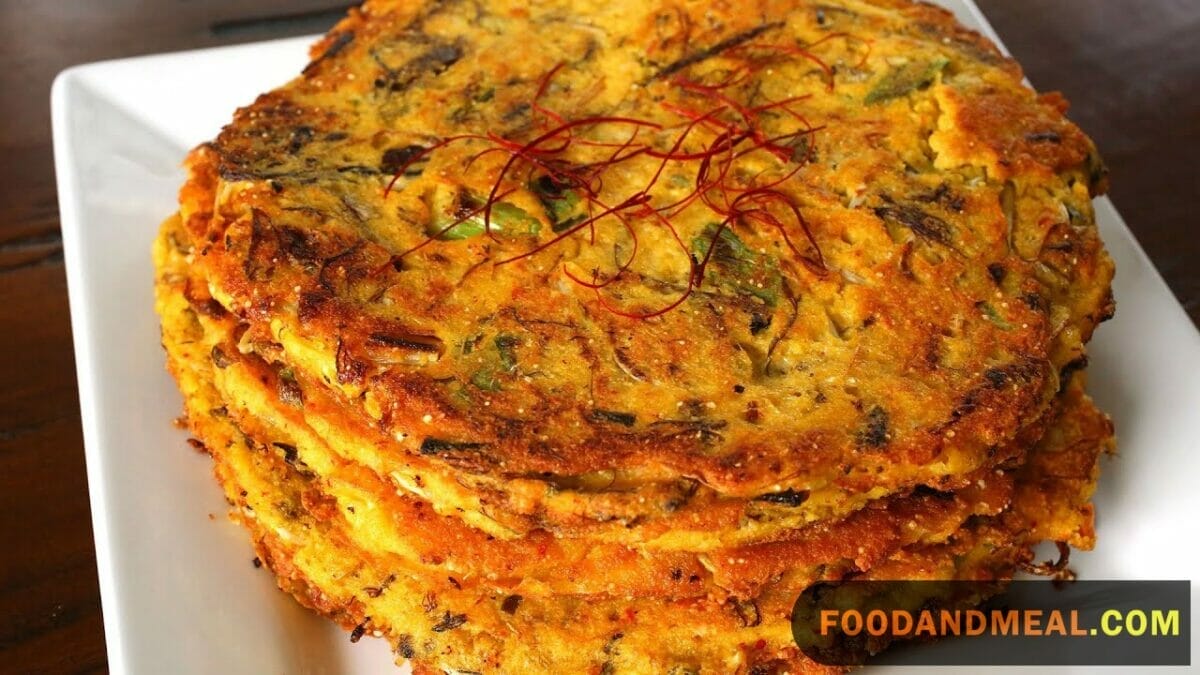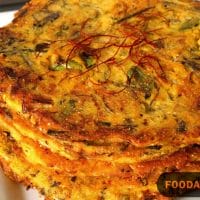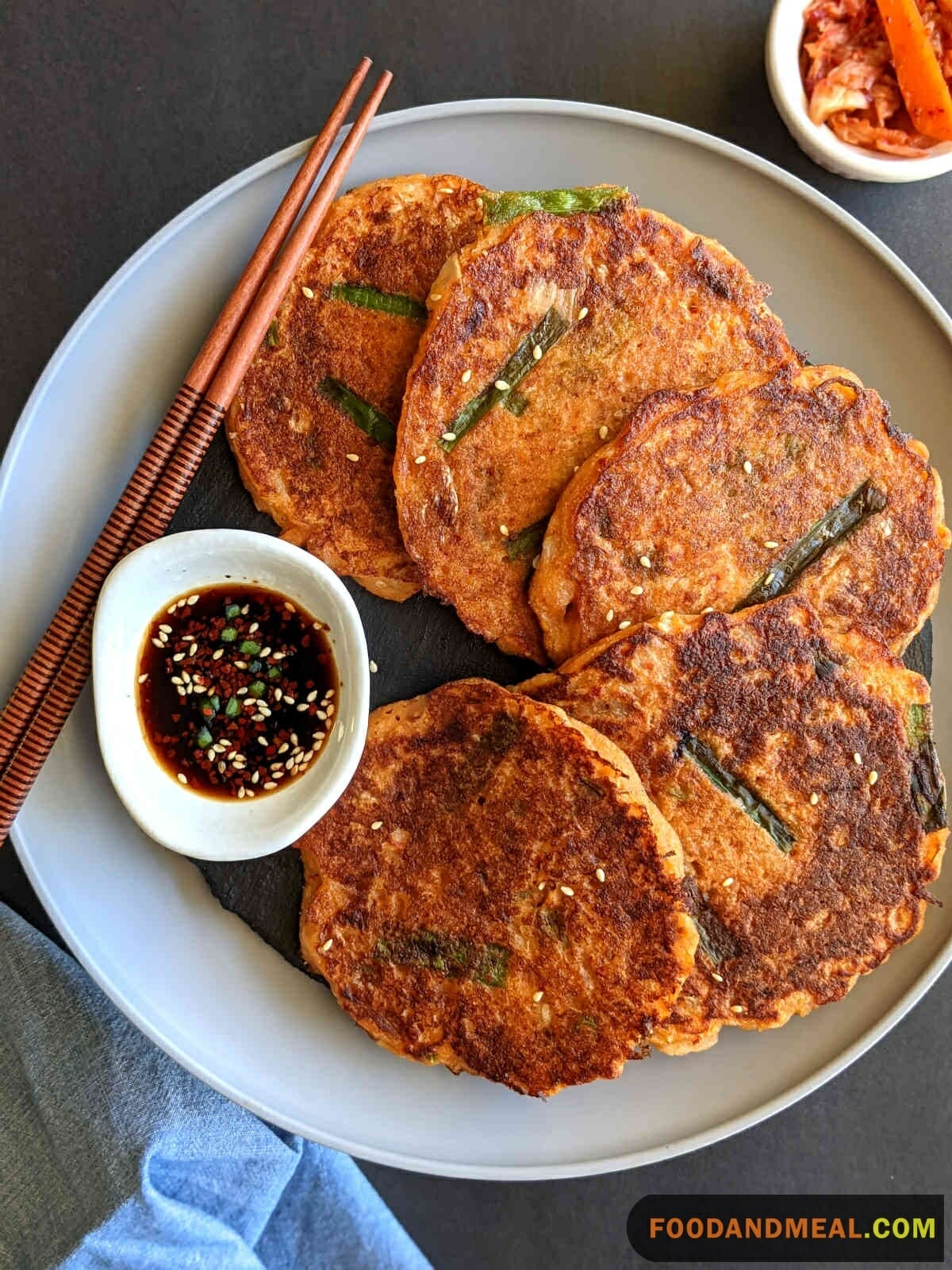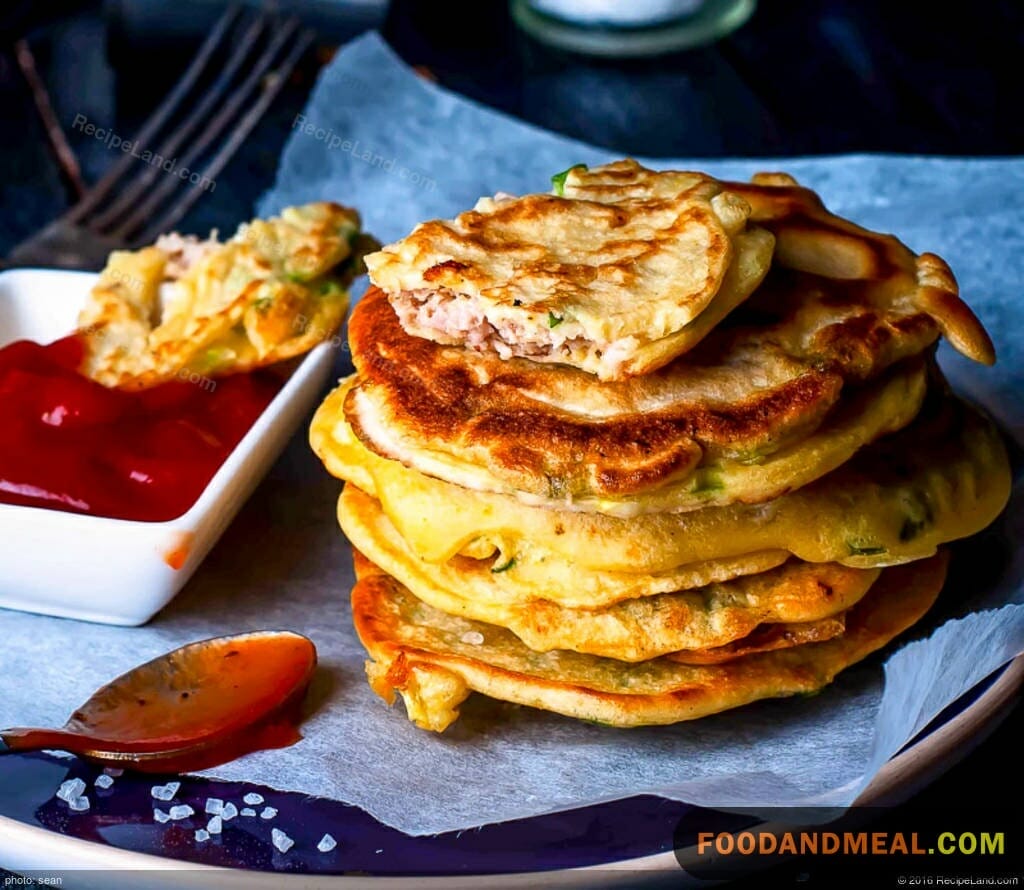I’m delighted to be sharing my easy mung bean pancake recipe with you today. This hearty vegetarian pancake is a staple comfort food from my childhood that I still crave as an adult.
Some of my fondest memories are of my mother making these pancakes for my sister and I on lazy Sundays. We would wake up to the nutty, savory aroma wafting from the kitchen, and it felt like the promise of a perfect day ahead. She would cook an enormous stack, piling our plates high as we giggled and drizzled them with sweet chili sauce. I can still picture us sitting at that old wooden table, faces sticky with sauce as we eagerly devoured every last bite.
As I grew older and moved away from home, I missed those cozy weekends with my family. Learning to make my mom’s mung bean pancakes has been a way for me to reconnect with those comforting memories. With each batch I mix up, I feel wrapped up in nostalgia and the familiar love of good food and good company.
These protein-packed pancakes are also quite healthy and easy to make. Mung bean flour gives them a boost of plant-based nutrition, and just a few simple ingredients come together to create the savory batter. I hope you’ll give this recipe a try and let me know if it brings back any food memories for you too! Maybe we can rekindle some special moments from our past over a short stack of hearty mung bean pancakes.

Mung Bean Pancake Recipe

MUNG BEAN PANCAKE
Equipment

Ingredients
- 2 cups dried, peeled mung beans, soaked overnight and drained
- 4 ounces boneless pork loin, trimmed and finely chopped
- 1/2 cup kimchi, rinsed, strained, and finely chopped, plus 1⁄2 cup of the kimchi pickling liquid
- 1 1/2 cups mung bean sprouts, chopped
- 1 tablespoon salt
- 6 scallions, halved lengthwise and cut into 1-inch pieces
- 5 garlic cloves, finely chopped
- Vegetable oil for cooking
- 1/4 cup soy sauce (or gluten-free soy sauce)
- 1 tablespoon white vinegar
Instructions
- In a food processor, purée the mung beans with 13⁄4 cups water until smooth.
- Transfer to a large bowl and add the pork, kimchi and kimchi pickling liquid, sprouts, salt, scallions, and garlic. Stir to mix well.
- Heat 2 tablespoons of the vegetable oil in a medium nonstick skillet over medium heat.
- Working in batches and adding more oil as needed, pan-fry the pancakes, using 3 to 4 tablespoons batter per pancake. Flip each pancake once, and cook until golden, for a total 8 to 10 minutes each. Transfer to paper towels to drain.
- Stir the soy sauce and vinegar together in a small bowl to make a dipping sauce.
- To serve, you can cut the pancakes in half or in quarters if you wish. Serve with the soy sauce dip on the side.
Video
Notes
- Crispy Goodness: Achieving that irresistible crunch is all about letting the batter rest. Patience is key – give it at least 30 minutes before you start cooking. Trust me, it's worth the wait!
- Flavor Fusion: Don't shy away from experimenting with toppings. From grated cheese to fresh herbs, the sky's the limit. Mix and match to create your signature Mung Bean Pancake masterpiece.
- Wholesome Swaps: Looking for a healthier twist? Use whole wheat flour or a gluten-free alternative for the batter. You'll be surprised how the pancakes remain just as delightful!
Nutrition
© Food And Meal
This website provides approximate nutrition information for convenience and as a courtesy only. Nutrition data is gathered primarily from the Spoonacular Database, whenever available, or otherwise other online calculators.
Cooking Tips

Firstly, patience is key when soaking the mung beans. Allowing them to absorb water for a longer period ensures a smoother batter consistency, contributing to a silkier texture in the pancakes. The aromatic dance of scallions and cilantro within the batter not only adds a burst of freshness but also brings a harmonious balance to the overall flavor profile.
When it comes to flipping these pancakes, a gentle touch and a well-heated pan are the secret ingredients. A slow and deliberate flip preserves the integrity of the pancake, ensuring a crisp exterior while maintaining a tender inside. Personally, the sizzling sound as the batter transforms into golden perfection in the pan brings a sense of satisfaction, creating a connection with the cooking process.
Furthermore, experimenting with different dipping sauces can add a personalized touch to the Mung Bean Pancake experience. A simple soy-based dipping sauce or a drizzle of sesame oil and rice vinegar can elevate the flavors, allowing each bite to be a unique journey. T
Serving Suggestions

A subtle soy milk drizzle brings out the earthy undertones of the pancakes, while the fusion of crispy gyoza adds a delightful crunch, marrying diverse textures in every bite. The wasabi infusion introduces a nuanced heat, harmonizing with the mung bean base without overwhelming its delicate texture. For a complete and satisfying meal, consider the pairing of Mung Bean Pancakes with crispy karaage, where the savory crunch of the fried chicken complements the pancakes perfectly. Alternatively, indulge in a refined dining experience by serving the pancakes alongside fresh sashimi, allowing the clean and fresh flavors to dance in harmony with the simplicity of the pancakes. These suggestions, rooted in culinary exploration, promise to transform your Mung Bean Pancake affair into a delightful and memorable dining journey.
FAQs of Mung Bean Pancake

- Can I make the batter ahead of time? Absolutely! Prepare the batter, cover it tightly, and refrigerate for up to 24 hours. Give it a good whisk before cooking.
- Can I freeze Mung Bean Pancakes? Definitely. Layer cooked and cooled pancakes between parchment paper, store in an airtight container, and freeze for up to a month. Reheat in a skillet or toaster oven.
- What’s the best way to reheat leftovers? For the freshest texture, reheat in a dry skillet over medium heat until warmed through. The crispiness will return, and you’ll be reminded of their deliciousness.
- Can I use sprouted mung beans? Absolutely, sprouted mung beans add a delightful nuttiness. Just ensure they’re cooked until tender before blending into the batter.
- How should I store any leftover batter? Store any unused batter in an airtight container in the fridge for up to two days. Remember to whisk it well before cooking as it might settle over time.
- What is Bindaetteok made of? Bindaetteok, a popular Korean pancake, is primarily made of ground mung beans as its base ingredient. The mung beans are soaked, ground into a paste, and then combined with various ingredients such as vegetables like kimchi, leeks, or onions, and sometimes ground meat. The mixture is pan-fried until golden brown, resulting in a savory and crispy pancake.
- What is mung bean in Korean? In Korean, mung beans are referred to as “Nokdu” (녹두). These small, green legumes are a staple in Korean cuisine and are commonly used to make various dishes, including bindaetteok.
- What is the difference between Nokdujeon and Bindaetteok? Nokdujeon and Bindaetteok are often used interchangeably, but there can be slight differences. While both are made from ground mung beans, Nokdujeon may contain other ingredients like vegetables, meat, or seafood. Bindaetteok, on the other hand, specifically refers to mung bean pancakes that typically include a mixture of ground mung beans and vegetables, sometimes with meat. Essentially, Nokdujeon is a broader term encompassing various savory pancakes made with mung beans.
- What do you do with mung bean flour? Mung bean flour is a versatile ingredient in Korean cuisine. It is commonly used to make bindaetteok or nokdujeon by combining the flour with water to create a batter. Additionally, mung bean flour can be used as a thickening agent in soups and stews or as a component in gluten-free recipes. It adds a unique flavor and texture to various dishes, making it a valuable ingredient in Korean cooking.
Conclusion
In conclusion, the journey of crafting Mung Bean Pancakes transcends the realm of mere cooking; it’s a voyage that intertwines flavors, textures, and a touch of personal creativity. As we explored the subtle art of preparing these delectable pancakes and the diverse serving suggestions, it became evident that the kitchen is a canvas for culinary expression. The gentle soy milk drizzle, the fusion experience with gyoza, the wasabi infusion, and the satisfying pairing with crispy karaage or refined sashimi—each suggestion invites you to embark on a unique gastronomic adventure.
At Food And Meal, where we celebrate the joy of cooking and savoring meals, we invite you to further explore culinary creativity. Visit foodandmeal.com for an array of recipes, tips, and inspiration to enhance your kitchen endeavors. Mung Bean Pancakes, with their versatile nature and these serving suggestions, exemplify the beauty of bringing diverse flavors together in a harmonious dance. As you venture into your own kitchen, may the joy of cooking and the satisfaction of creating memorable meals be your constant companions. Here’s to more culinary explorations and the simple pleasure of sharing delicious moments around the table.
Hi! I'm Nazia of ‘Nazia Cooks’, a self-taught baker and cook residing in Chennai. Rooted in the rich South Indian culinary landscape, my palate has expanded to embrace global flavors. I revel in crafting fusion dishes, melding traditions to birth unique tastes.





